Something’s moving — I can hear soft bumps and faint slithering coming from the stacked rows of 70-odd bins in the center of the room. The crisp label on the edge of each tray reads: D. couperi.
More slithering. Nick Clark rolls one of the drawers open, and peeking out from the tip of a cardboard paper-towel roll is a young eastern indigo snake. Staring up at me, he scents the air with his tongue.
Next year, this little snake and 19 others here at the Orianne Center for Indigo Conservation (OCIC) will be the first indigo snakes ever reintroduced to Florida, at The Nature Conservancy’s Apalachicola Bluffs and Ravines Preserve. The partnership is part of an effort to return the snakes to a part of their former range — the Florida Panhandle — an important step for a species in trouble.
Sandhills, Snakes, and Gopher Tortoises
Eastern indigo snakes are unmistakable against the palette of greys, greens, and browns of Florida’s pinelands. Jet-black, iridescent scales cover their bodies, glistening like an oil slick in the sunlight. Below their large, dark eyes, a vibrant scarlet-orange wash lines their throats and chins.
The longest nonvenomous snake in North America, indigo snakes can reach lengths of more than 8 feet. Pound-for-pound they need as much territory as a lion — males patrol more than 1,200 acres — which is the largest home range of any North American snake. And like lions, indigo snakes are apex predators, devouring just about anything they can overpower, including small alligators, turtles, small mammals, birds, and even rattlesnakes.
“They have had an interesting history because of their docile temperament, they virtually never bite people even when picked up in the wild,” says Dirk Stevenson, the fire forest initiative director at The Orianne Society and an expert on indigos. “They’re also good looking and have always had a following amongst snake enthusiasts.”
Once widespread throughout the southeast, today indigos are only found, with difficulty, in peninsular Florida and southern Georgia. “The species is declining almost to point of disappearing in the western portion of its range,” says Stevenson.
Habitat loss and fragmentation are the major culprits, as is the case with the decline of another emblematic Florida reptile, the gopher tortoise. Gopher tortoises excavate deep burrows, which indigo snakes and more than 350 other Florida species depend upon to stay warm during periodic winter freezes. When tortoise populations crashed in northern Florida, indigo snakes soon followed.
The species is declining almost to point of disappearing in the western portion of its range.
Dirk Stevenson.
A Big Step for Little Snakes
“Here we go,” says Nick Clark, a snake specialist at the OCIC. Grabbing the cardboard tube, he gently tips the little snake onto his outstretched palm. It immediately begins exploring, moving steadily through Clark’s hands. “You can see his tongue flicking,” he says, “he’s very curious about what’s going on.”
Located in Central Florida, the OCIC is an eastern indigo snake captive breeding facility established by The Orianne Society and now operated by the Central Florida Zoo. Lead by director Fred Antonio, the OCIC has a healthcare center, herpetarium, and outdoor enclosures all dedicated to breeding eastern indigo snakes.
As Clark talks, he constantly moves his hands to keep up with the active little indigo. The snake pokes around his elbow before trying to head over his shoulder. “They’re just like kids,” Clark says, “they know exactly where you don’t want them to go and then head for it.”
Born in August 2014, these snakes still have nearly a year to go before they will be released into in the wild. In the spring of 2016, the OCIC and the Conservancy will release 20 snakes into the Conservancy’s Apalachicola Bluffs and Ravines Preserve in North Florida. About 30 others will head to southern Alabama’s Conecuh National Forest, where the OCIC and Auburn University have released nearly 100 indigos over the last four years.
Antonio explains that they wait until the snakes are about 18 to 20 months old to give them the best chance of survival. The smaller the snakes are, the more vulnerable they are to predators, like red-shouldered hawk.
“Currently we are working on the best strategy for reintroduction there,” says Antonio, “so we are still designing that model and will be looking closely at that over the next six months or so.”
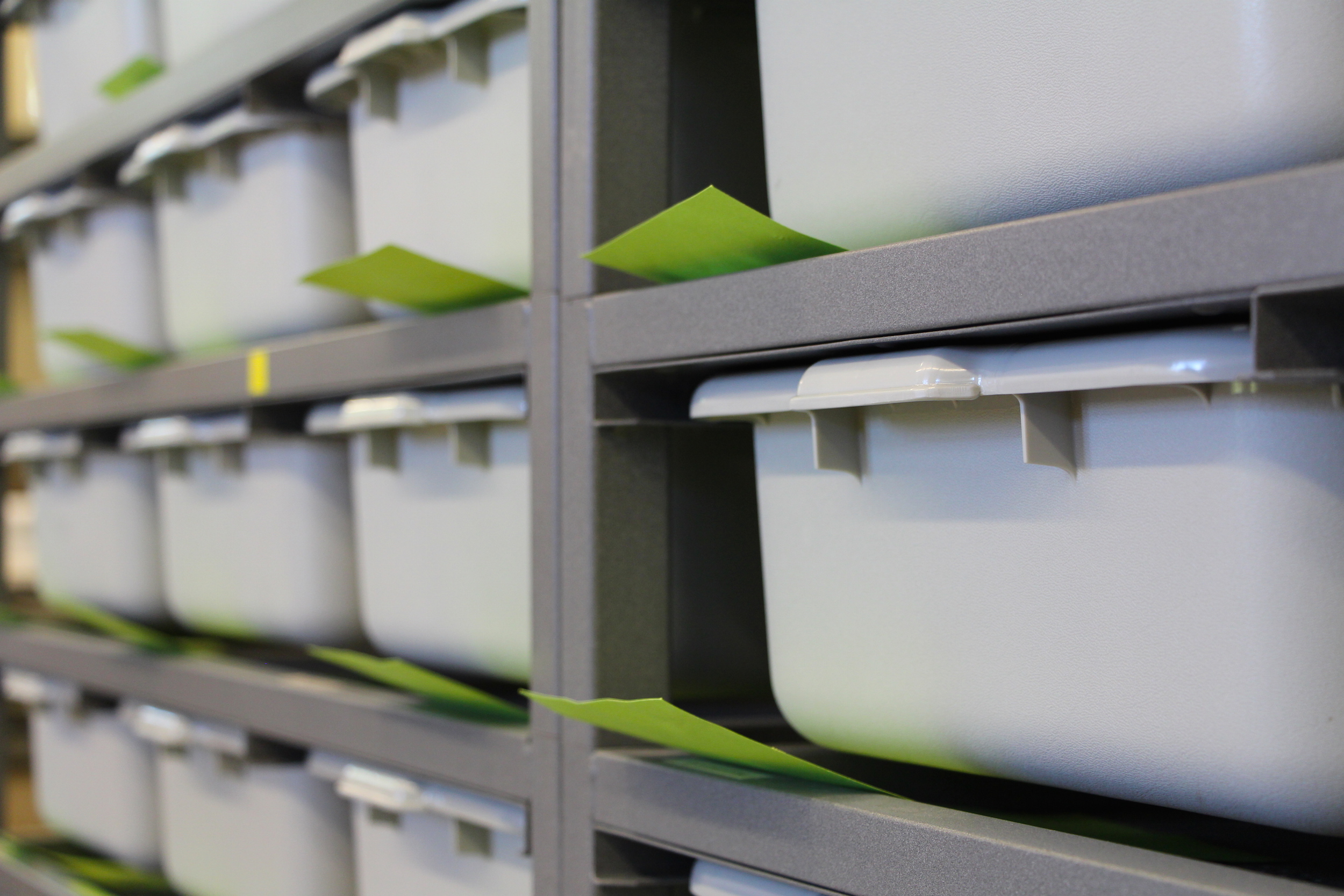
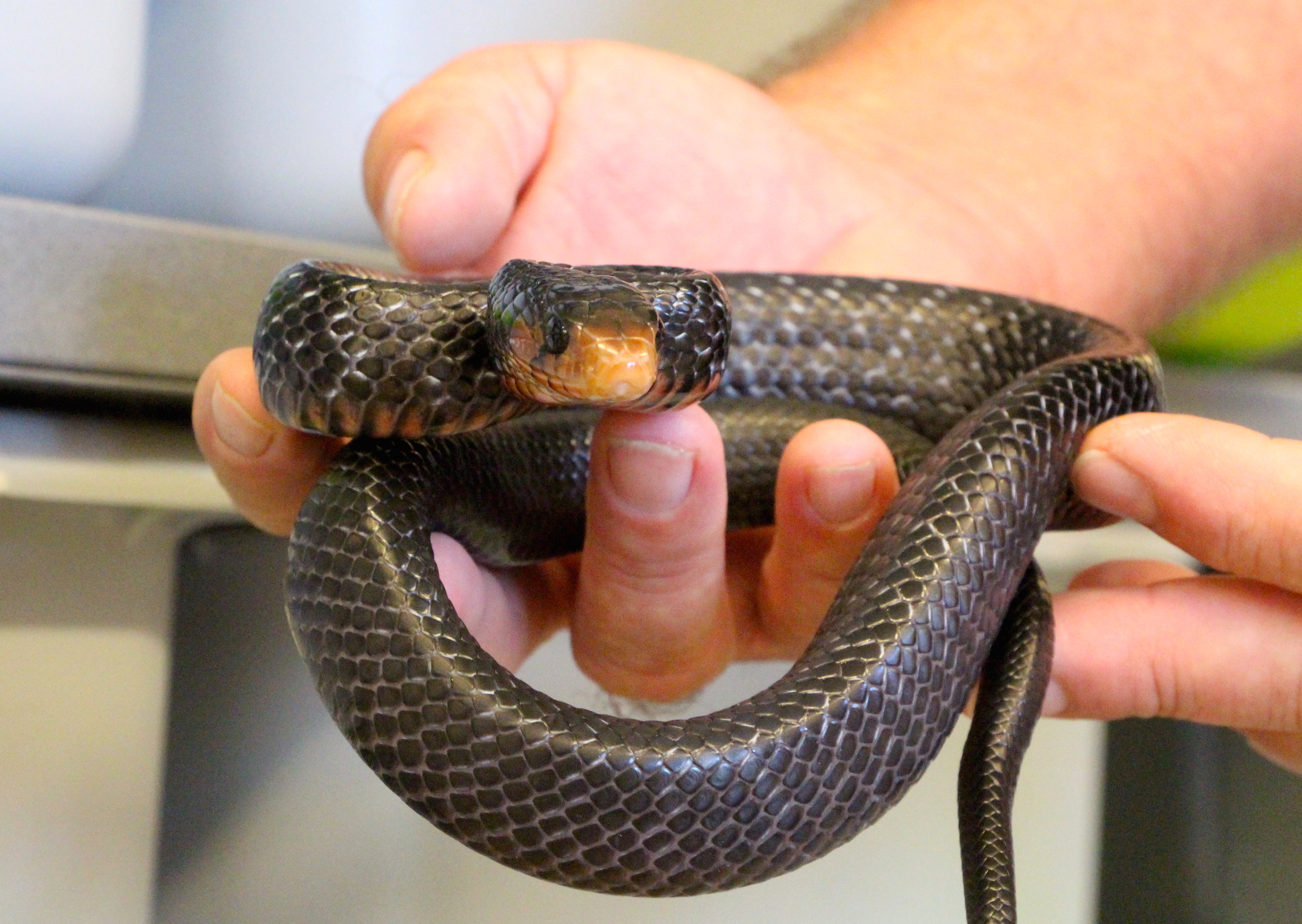
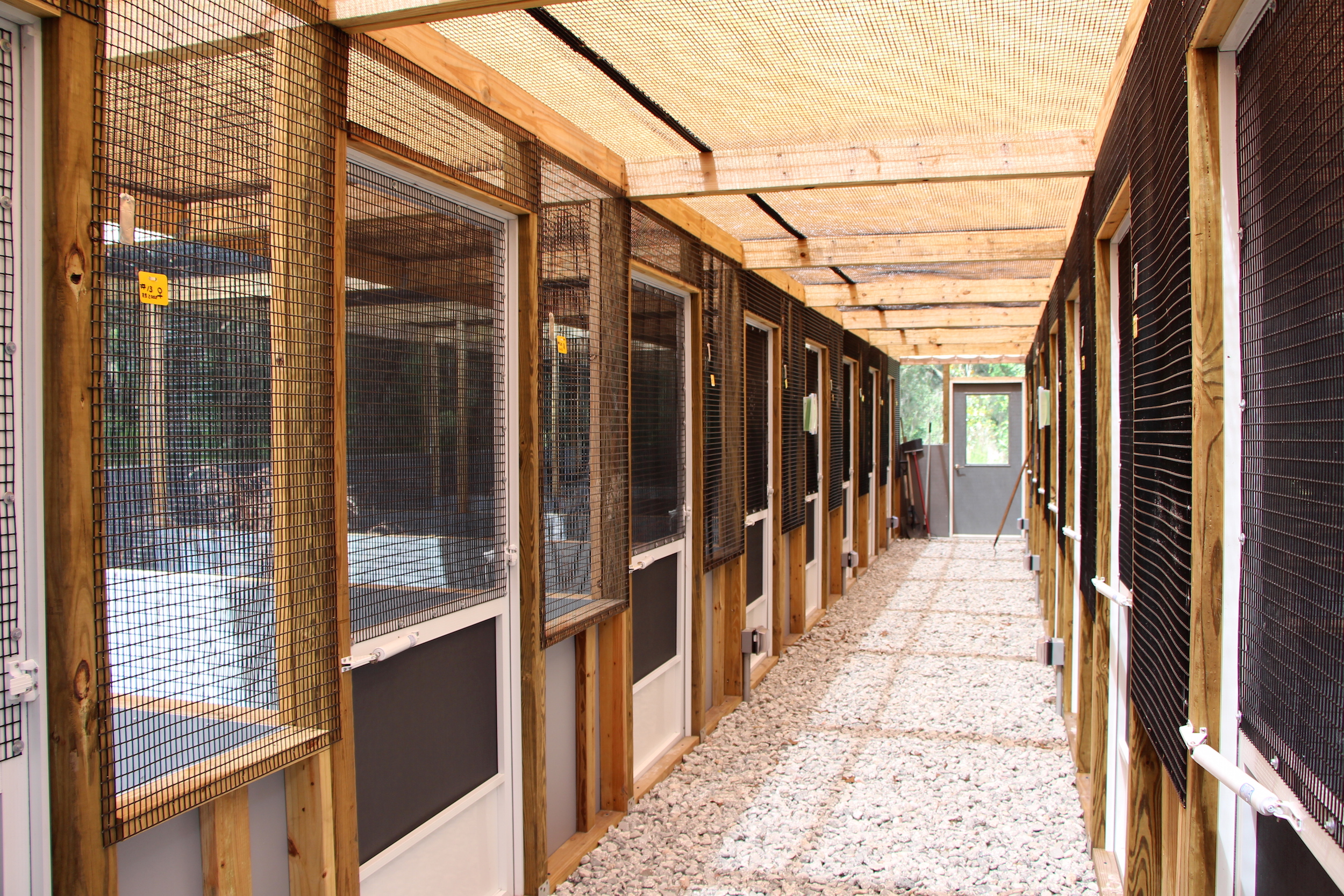
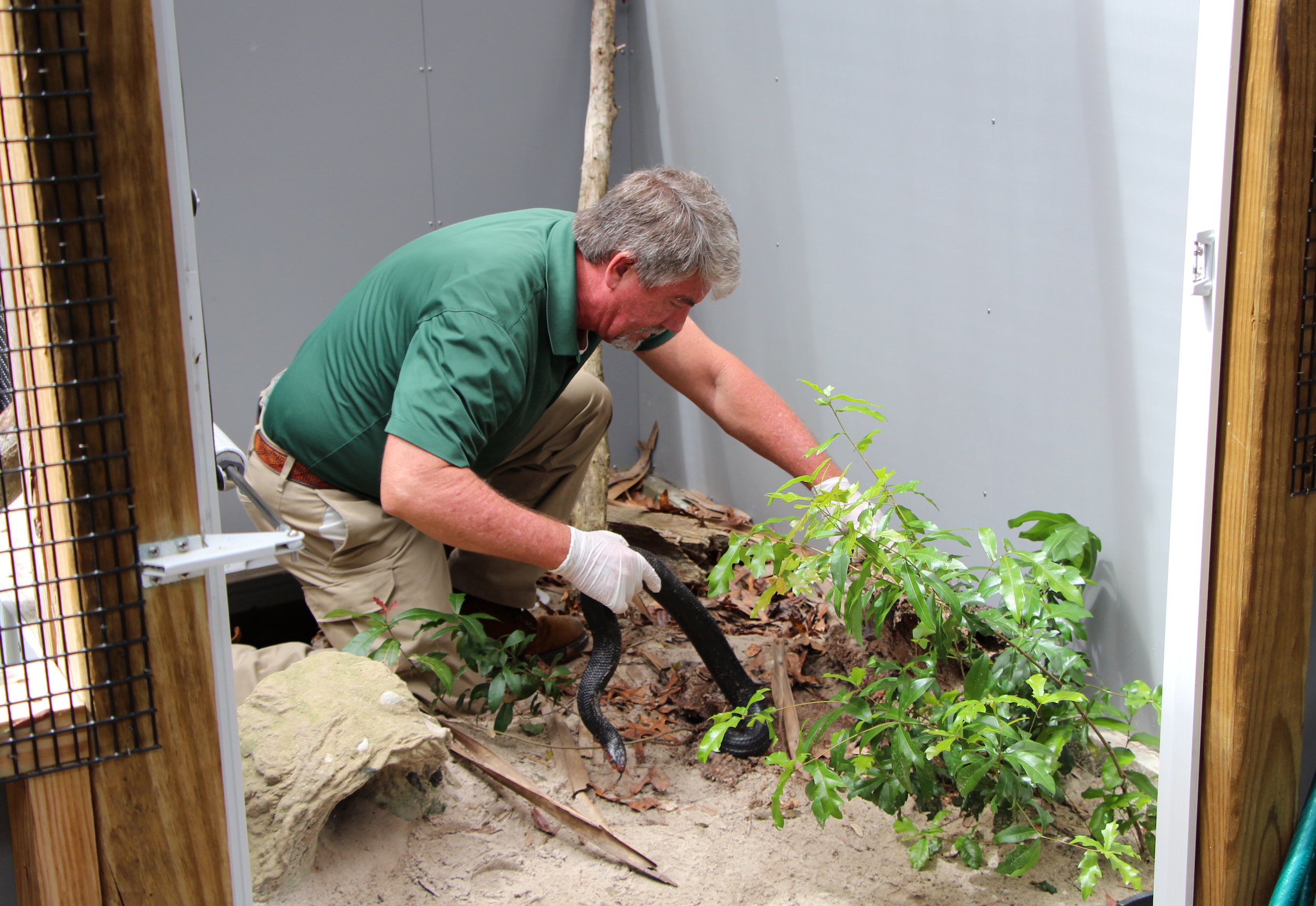
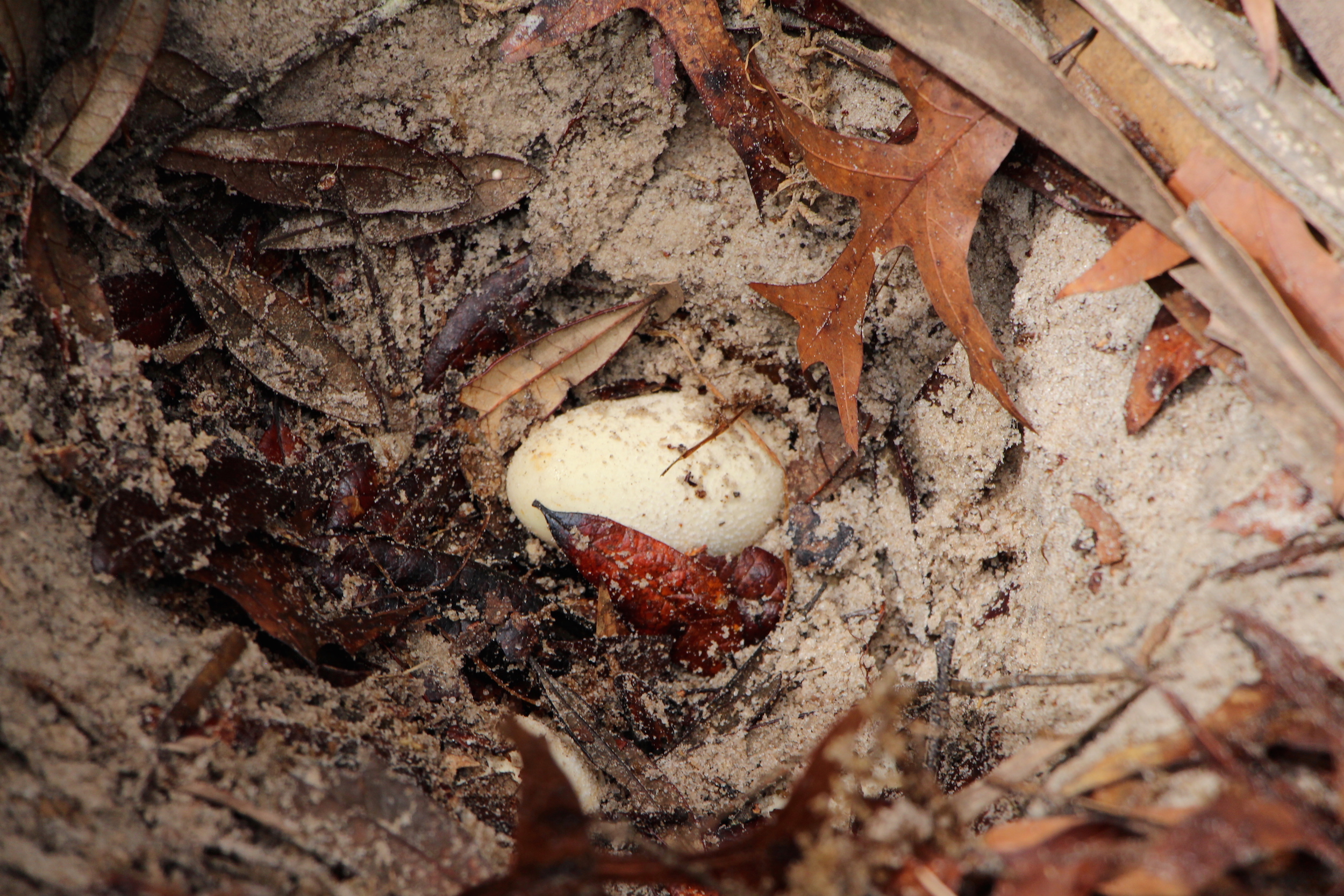
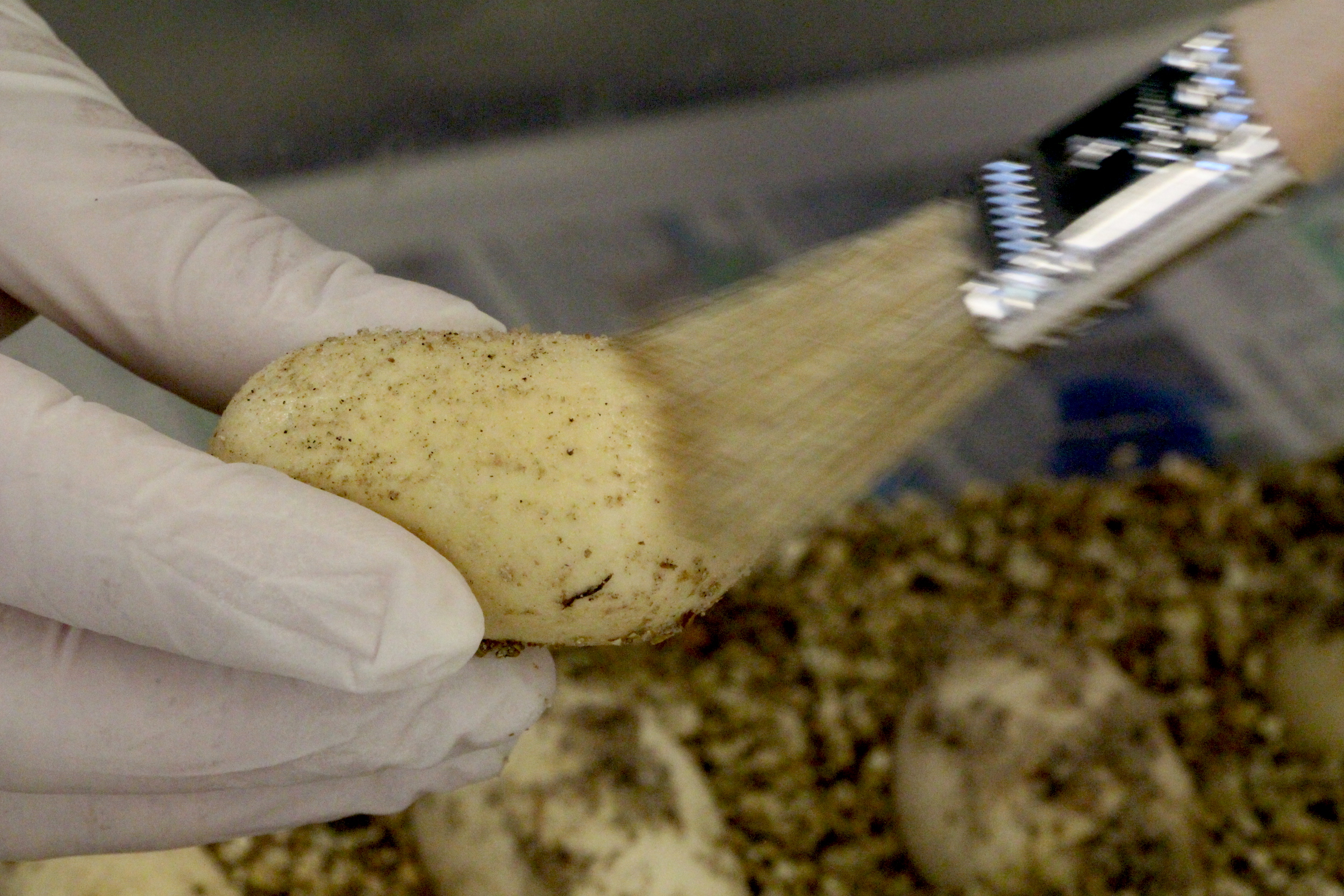
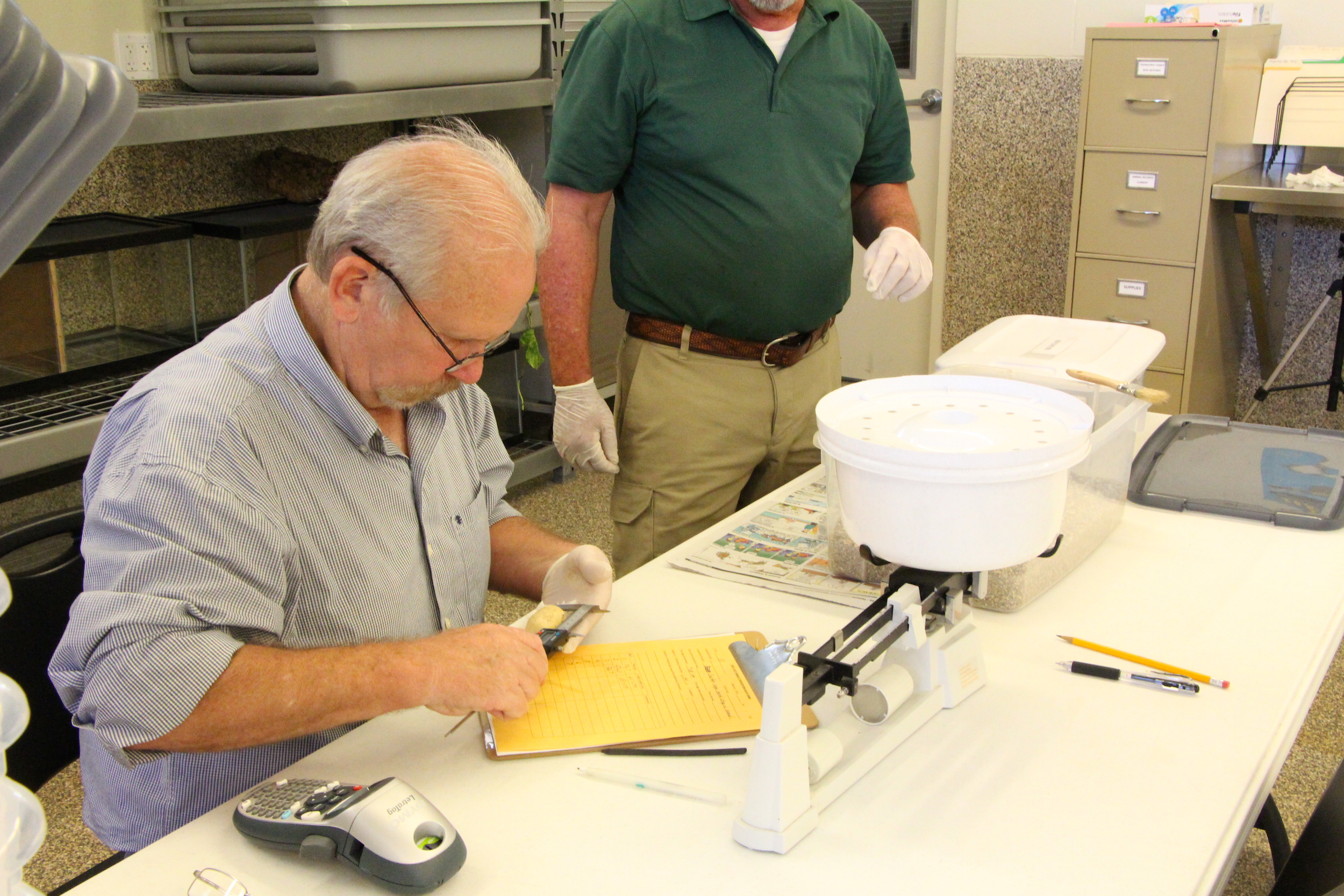
Hatching the Next Generation
“We have eggs,” says Clark, digging gently through the sand and leaf litter.
We’re in one of the outdoor enclosures, checking on the female indigo snakes that are expected to lay eggs this spring. Designed to mimic the sandhill habitat, each enclosure is complete with a fabricated gopher tortoise burrow made from a buried white plastic cooler.
After gently lifting the female snake aside, Clark searches carefully through the leaf litter covering a 12-inch deep hole in the sand. During laying season, the OCIC staff check the gravid females each day to see if any eggs were laid.
“This looks like a good one,” Clark says, lifting an oblong, cream-colored egg from the sand. Careful not to shift the egg’s position, he places it inside a plastic rubber bin filled with vermiculite, which looks like cat litter. Six more eggs join the first, as the female indigo watches quietly from the shelter of a log a foot away.
Collecting finished, it’s time to process the eggs. As Antonio carries the rubber tub, Nick picks up the female and carries her into the herpetarium.
First, Antonio and Clark run their hands along the female’s body to make sure that she doesn’t have any unlaid eggs still inside. Next, they set to work processing the eggs: each is carefully brushed, weighed, measured, and marked with a number using a charcoal drawing pencil.
“By taking this data on all of these eggs and females over the years, we’ll be able to develop a huge database to look at eastern indigo snake reproduction in captivity,” says Antonio, “and hopefully make statement on what their reproductive capability is in the wild.”
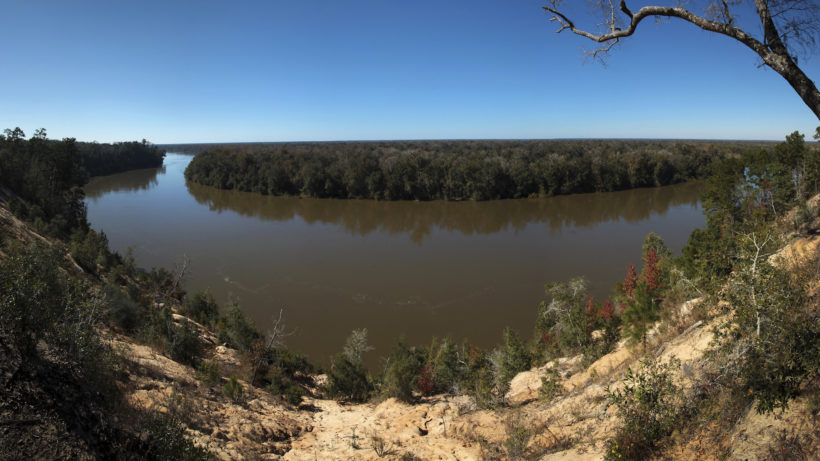
A New Future for Florida Indigos
The reintroduction at ABRP is an important piece of the puzzle for returning the eastern indigo snake to its former range and helping this threatened species recover.
“All indigo experts agree that, for the snake to be recovered, there will have to be viable population in the western portion of the species’ range,” says Stevenson. “We have habitats there that could support them, but they went missing historically so now we need to put them back.”
The next challenge will be linking the remaining preserves and public lands where indigos are found, so that portions of the population are not isolated as Florida’s rampant development continues.
Antonio says that if the OCIC’s breeding program continues to go well, additional reintroductions could help separate populations of indigos merge into each other and repopulate the region.
“We are trying to bring back an iconic reptile of the deep south,” says Stevenson. “We have people travel from all over the world to Georgia and Florida with hopes of seeing an indigo snake in the wild. This is a phenomenal animal, and I can’t understate that.”
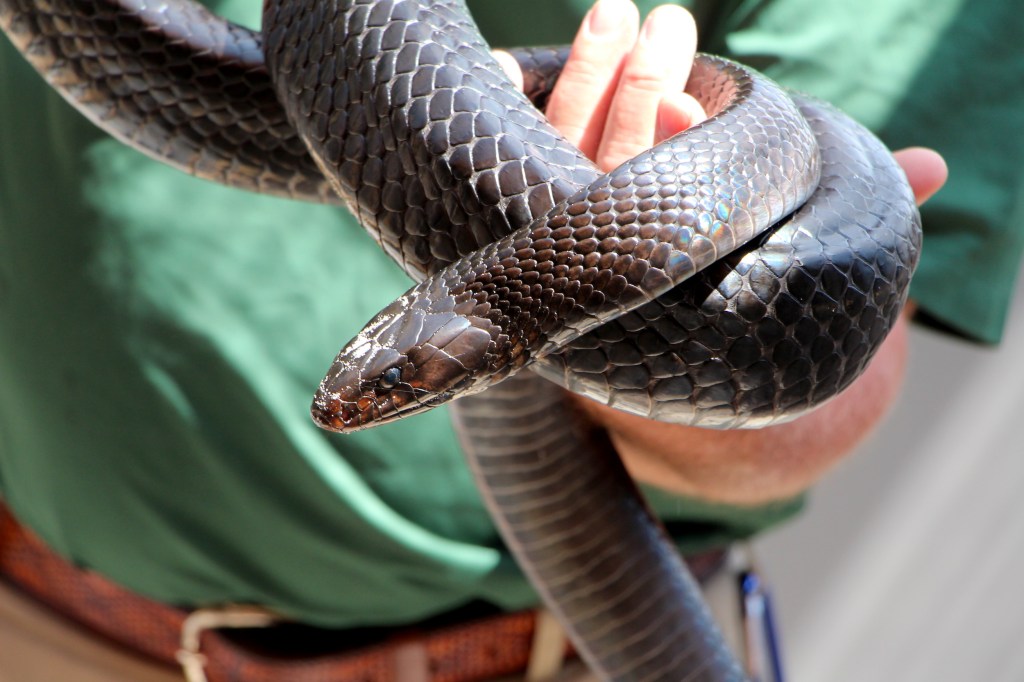



thank you for all that you have done & will continue to do save OUR EARTH
I am a retired OB-GYN and have been breeding snakes as a hobby for more than 30 years. I live in Va half the year and Fl. the other half. I’ve been breeding and releasing Eastern chain kings in the Northern Neck section of Va just for fun and wonder if your project would like some “sattelite” breeding locations to help increase the numbers of Indigo’s to release? I would love to help as I like many other herp lovers have always been fascinated with Indigos since holding my first one more than 50 years ago as a kid. I would love to help all at my own expense. Let me know what I can do to help. David
I was born and raised in Daytona Beach Florida and was fortunate enough to be a country girl. The feed room in our barn was home to a family of Indigos thru out my childhood and into my college years………they are actually quite social and enjoy being talked to etc. I now live in Ocala National Forest and have one indigo that we see from time to time in the back pasture………..wish there were more of them. I am seventy so much of the wildlife has changed in my lifetime. Keep up the good work.
I use to operate a Back hoe in eastern central Florida, back in late 80s and early 90s. Was a large Orange grove. Ive seen Indigo everyday while driving through the grove while looking inside the drainage pipes. Almost every pipe I saw had an indigo curled up just a foot or so inside the pipe. Beautiful Snakes. Great work in all your efforts to re-introducing gem back in the wild. Thank you?
cool
cool
I have been an amateur herpetologist for over 70 years starting in The Brooklyn Children Museum. The Indigo Snake has always been my favorite reptile, although I have never owned one. I now live in Florida and I am always on the lookout for an Indigo Snake.